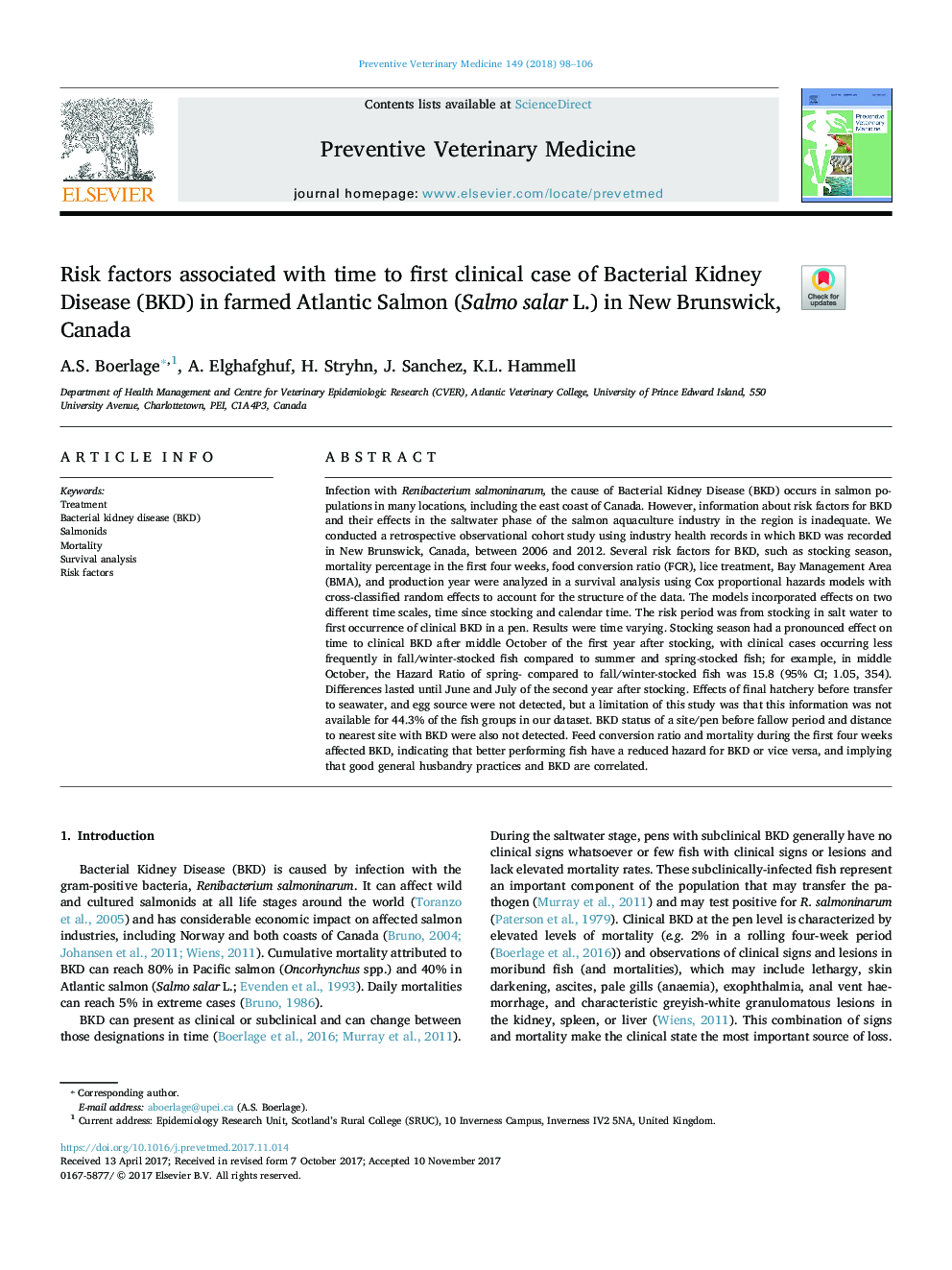| Article ID | Journal | Published Year | Pages | File Type |
|---|---|---|---|---|
| 8503610 | Preventive Veterinary Medicine | 2018 | 9 Pages |
Abstract
Infection with Renibacterium salmoninarum, the cause of Bacterial Kidney Disease (BKD) occurs in salmon populations in many locations, including the east coast of Canada. However, information about risk factors for BKD and their effects in the saltwater phase of the salmon aquaculture industry in the region is inadequate. We conducted a retrospective observational cohort study using industry health records in which BKD was recorded in New Brunswick, Canada, between 2006 and 2012. Several risk factors for BKD, such as stocking season, mortality percentage in the first four weeks, food conversion ratio (FCR), lice treatment, Bay Management Area (BMA), and production year were analyzed in a survival analysis using Cox proportional hazards models with cross-classified random effects to account for the structure of the data. The models incorporated effects on two different time scales, time since stocking and calendar time. The risk period was from stocking in salt water to first occurrence of clinical BKD in a pen. Results were time varying. Stocking season had a pronounced effect on time to clinical BKD after middle October of the first year after stocking, with clinical cases occurring less frequently in fall/winter-stocked fish compared to summer and spring-stocked fish; for example, in middle October, the Hazard Ratio of spring- compared to fall/winter-stocked fish was 15.8 (95% CI; 1.05, 354). Differences lasted until June and July of the second year after stocking. Effects of final hatchery before transfer to seawater, and egg source were not detected, but a limitation of this study was that this information was not available for 44.3% of the fish groups in our dataset. BKD status of a site/pen before fallow period and distance to nearest site with BKD were also not detected. Feed conversion ratio and mortality during the first four weeks affected BKD, indicating that better performing fish have a reduced hazard for BKD or vice versa, and implying that good general husbandry practices and BKD are correlated.
Related Topics
Life Sciences
Agricultural and Biological Sciences
Animal Science and Zoology
Authors
A.S. Boerlage, A. Elghafghuf, H. Stryhn, J. Sanchez, K.L. Hammell,
